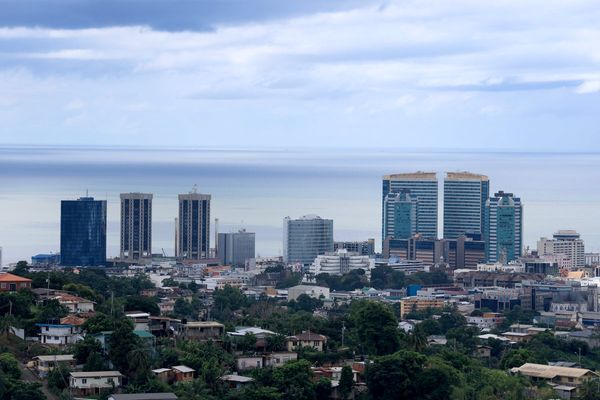
The Victorian government should ramp up train services in Melbourne’s north and west, extend eight tram routes and create six new express bus services within the next five years, the state’s independent infrastructure adviser has recommended.
Infrastructure Victoria’s 30-year plan also calls for off-peak public transport to be made cheaper and for collaboration with the commonwealth to introduce a road user charge, after a previous state levy on electric vehicles was ruled unconstitutional by the high court.
The body says the 45 final recommendations, released on Tuesday, are needed to respond to climate change which threatens “buildings, roads and power lines” as well as population growth.
Sign up: AU Breaking News email
The government has set a target of 800,000 new homes to be built in Victoria by 2034, with 70% of new homes in established suburbs. The state’s population – estimated at 6.9 million by the Australian Bureau of Statistics in 2024 – is forecast to increase by 4 million people in the next 30 years.
The changes are also designed to make the most of Melbourne’s new Metro Tunnel which is due to begin taking passengers in December.
Infrastructure Victoria chief executive, Dr Jonathan Spear, said the report, which calls for a $65bn spend over three decades, was predicated on “how can we make best use of those investments that we’ve made already”, including existing infrastructure.
Some of the recommendations, including reducing speed limits to 30km/h in areas with children and the creation of separated bicycle corridors in Melbourne, Geelong, Ballarat, Bendigo and Wangaratta, were made public in a draft plan in March.
But after feedback, a new recommendation has called for changes which would allow more train services to run in Melbourne’s north, with modelling showing many residents of suburbs including Coburg and Brunswick could soon be forced to drive to work.
The report says they already wait up to 20 minutes for trains during peak times, four to five times longer than stations in Melbourne’s south-east located a similar distance from the CBD. Trams on Sydney Road are up to 27% slower than the network average due to mixed traffic and predicted to get 4% slower by 2041.
Infrastructure Victoria says upgrades to power and signalling in the City Loop, where space has been freed up by the Metro Tunnel, and building an extra track on the Upfield line, would allow nine trains to run an hour rather than four.
It has also modelled tram extensions that make the most of capacity changes created by the Metro Tunnel’s new stations, calling for the expansion of eight routes over five years at a cost of up to $5.7bn, to encourage the construction of more new homes nearby.
That includes linking routes 11 and 67 to Fishermans Bend, where the government plans for 80,000 people to live by 2050, and extending route 3 to Hughesdale via Chadstone. Tram services to Fishermans Bend and Chadstone were promised in 2018 but have not eventuated.
The report also identifies Melbourne’s rapidly growing west as poorly served by buses and metropolitan trains, with 63% of residents driving to work compared with 32% in inner Melbourne.
It has called for the extension of Metro train services to Melton, additional tracks from Sunshine to Caroline Springs, as well as new train stations at Thornhill Park, Mount Atkinson and Altona North.
In areas not serviced by train lines, it has called for six new bus rapid transit networks, which use larger buses with dedicated lanes and platforms, similar to those in Sydney, Brisbane and Adelaide.
Another recommendation is charging lower fares for off-peak travel, with Infrastructure Victoria’s research showing bus passenger numbers can increase by up to 19% for every $1 fare discount. It also calls for the expansion of bus and coach routes and services in regional areas and cities.
“While some people get excited about the idea of passenger rail services to some of Victoria’s smaller regional cities, our modelling and analysis shows they are probably not viable. But some high-quality coach services are,” said Spear.
The review’s 45 recommendations for the next five years cover transport, health, housing, energy, water, social infrastructure and the environment.
It has also advised on eight changes Victoria will probably need in the next 30 years but do not necessarily require immediate action.
The report will be tabled in parliament this week, with the government obliged to respond to the recommendations within a year.







